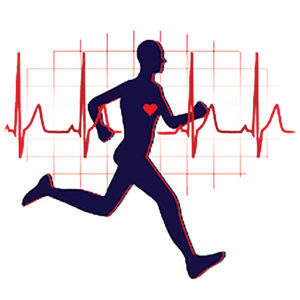Aerobic exercise ticks all the boxes for losing weight and toning up the body but overdoing it means putting your heart at risk
Cardio is often recommended to those who want to lose weight, get fit or just be healthier. This form of aerobic exercise means rhythmic activity that raises your heart rate into a zone where you burn fat and calories. To count as Cardio, it must be done for at least 10 minutes. ‘Aerobic’ refers to the use of oxygen to meet energy demands during exercise, whereas ‘anaerobic’ exercise is used by athletes in non-endurance sports to promote strength, speed and power and by body builders to build muscle mass.
According to Paige Waehner, the benefits of Cardio for human health and performance stem from the following metabolic changes:

- Helps burn fat and calories for weight loss
- Increases lung capacity
- Helps reduce stress
- Improves the quality of sleep
Now to explain ‘Chronic Cardio’. This is a pattern of frequent, sustained workouts of medium-to-difficult intensity with insufficient rest between sessions. Examples include maintaining a high heart rate on a bike or treadmill for over an hour or completing marathons or triathlons. Or it could constitute moderate to intense aerobic exercise performed over 30-60 minutes per day, several times a week. This incorporates running, jogging, stationary bike, spinning, etc. It excludes walking, which is considered a low intensity activity.
Chronic Cardio or the act of overdoing endurance training over time was first coined by fitness author and blogger Mark Sisson, who authored The Primal Blueprint. His stated goal is “to motivate individuals to be liberal, energetic, passionate and enthusiastic about leading a healthy, happy, fit, balanced, active lifestyle, with the minimal measure of pain, suffering and sacrifice possible”.
There are some solid opinions and arguments for and against Cardio as well as Chronic Cardio. The main finding against the latter is that long periods of endurance training at a steady state for over 75% of max heart rate influences our heart and may harm testosterone and therefore the male reproductive system.
Another perspective is that doing cardio consistently makes the body progressively effective at utilising fat as a vitality source. This sounds awesome but actually it’s not. To be progressively effective at utilising fat as a vitality source means to burn less of it, not more of it! That is the reason it has an adverse influence. Stretched Cardio sessions can hurt the body in different ways such as:
- Trouble in sleeping
- Reduced metabolism that can hamper weight loss
- Weakened immune system
So how to assess whether you’re doing too much Cardio? For that, answer these three questions: Do you feel that you’re not well rested even after sleeping for adequate number of hours at night? Are you becoming ill more frequently than normal? Are you not able to reduce your body fat? In addition, if you’re a woman, has your menstrual cycle turned out to be unpredictable in the wake of doing a lot of Cardio?
If your response to these questions is a ‘yes’ then it is an indication that you’re doing a lot more Cardio than what is required by the body!
As for the heart, Chronic Cardio pushes it too far for a prolonged period of time on a regular basis. The result is that heart muscles can experience expansion and fatigue. This could lead to atrial fibrillation, which means an irregular, fast heartbeat.
As per the recommendation of fitness researchers, there should be equilibrium between aerobic and anaerobic training that would give a chance to heart muscles to rest awhile and still help you achieve your fitness goals.





